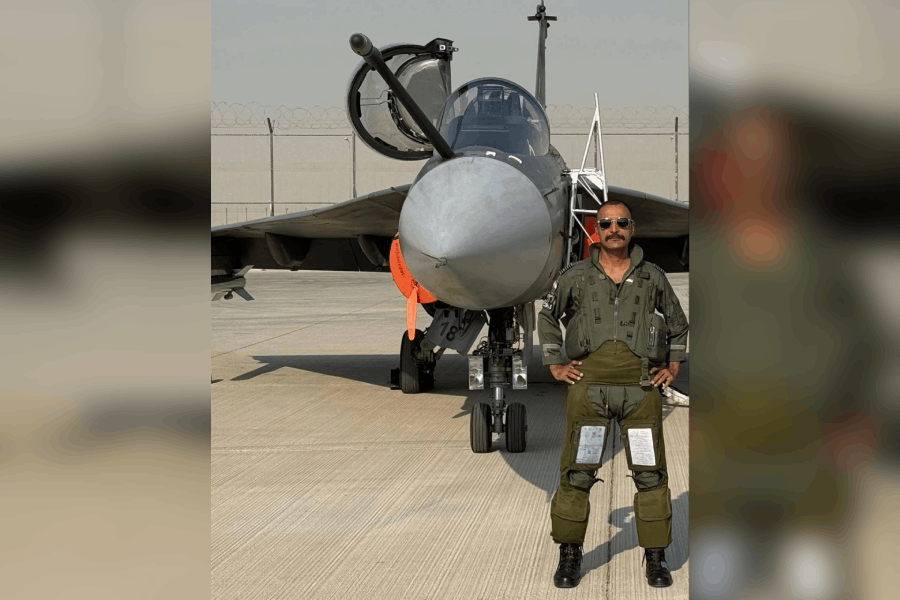The Tejas fighter jet crash in Dubai on Friday has left many wondering whether the Indian Air Force pilot flying it had attempted ejection at the last moment but failed to do so because he didn’t have the elevation or time.
Wing Commander Namansh Syal was killed when the jet nosedived and crashed while performing an aerobatic manoeuvre at a low altitude at the Dubai Air Show.
IAF sources said analysis of multiple videos of the incident point to an ejection attempt by Syal, which didn’t succeed because the jet was flying at a low altitude.
“It seems the pilot failed to recover from a negative-G manoeuvre at low altitude as the vertical speed of the aircraft was too high, resulting in the crash,” said a source.
Syal, 34, is a native of Patiyalkar village in the Kangra district of Himachal Pradesh. He is survived by his wife, an IAF officer who is currently undergoing training in Calcutta, their six-year-old daughter and his parents.
The couple, who met at their first posting in Pathankot, had married in 2014.
“The exact cause of the tragedy will be known only after the court of inquiry, which has already been constituted by the IAF. The investigators will examine the flight data recorder and
cockpit voice recorder to ascertain whether the ejection handle was activated. Other indicators include whether low altitude or airspeed was within safe ejection limits. It is not clear yet whether the pilot attempted ejection,” the source said.
The ejection success, he said, usually depended on factors such as altitude, airspeed and pilot reaction time.
The IAF on Saturday described Syal as a “dedicated fighter pilot and thorough professional”.
“He served the nation with unwavering commitment, exceptional skill and an unyielding sense of duty. His dignified persona earned him immense respect through a life devoted to service, and was visible in the send-off attended by UAE officials, colleagues, friends, and the officials of the Indian embassy,” the IAF said.
“The IAF stands in solidarity with his family in this hour of profound grief and honours his legacy of courage, devotion and honour. May his service be remembered with gratitude,” it added.
One of the videos shows the country’s flagship light combat aircraft (LCA) up close as it attempts a stunt with a few turns in the air before going into a free fall and hitting the ground and erupting into a fireball, kicking up a huge cloud of smoke and dust.
Syal, a squadron leader, completed his schooling from Sainik School at Sujanpur Tira in Hamirpur district. His father, Jagarnath Syal, had served in the Indian Army’s Medical Corps and later worked in the education department before retiring as
a principal.
Sources said Syal was commissioned into the IAF in 2009.
Defence expert Captain Anil Gaur (retd) said the crash might have taken place after the pilot lost control or blacked out due to the G-forces induced by gravity.
“Pilots wear a G-suit so that the blood does not pool in their legs... there might have been an issue with that. What exactly happened can only be determined once the cockpit data is retrieved. I express my condolences to the family of the pilot,” ANI news agency quoted Gaur as saying.
The Tejas that crashed was from a squadron in Tamil Nadu’s Sulur, and had been in service since 2016.
This was the second crash involving a Tejas LCA Mk-1, India’s first home-grown lightweight multi-role fighter jet, since the jet’s induction in 2016. The incident comes at a time when the IAF is preparing to induct its advanced variant (LCA Mk-1A).
This was, however, the first fatality linked to the Tejas. A Tejas had crashed near Jaisalmer in March 2024, but the pilot had managed to eject safely then.
The government has been promoting the Tejas as the future mainstay of the IAF.









